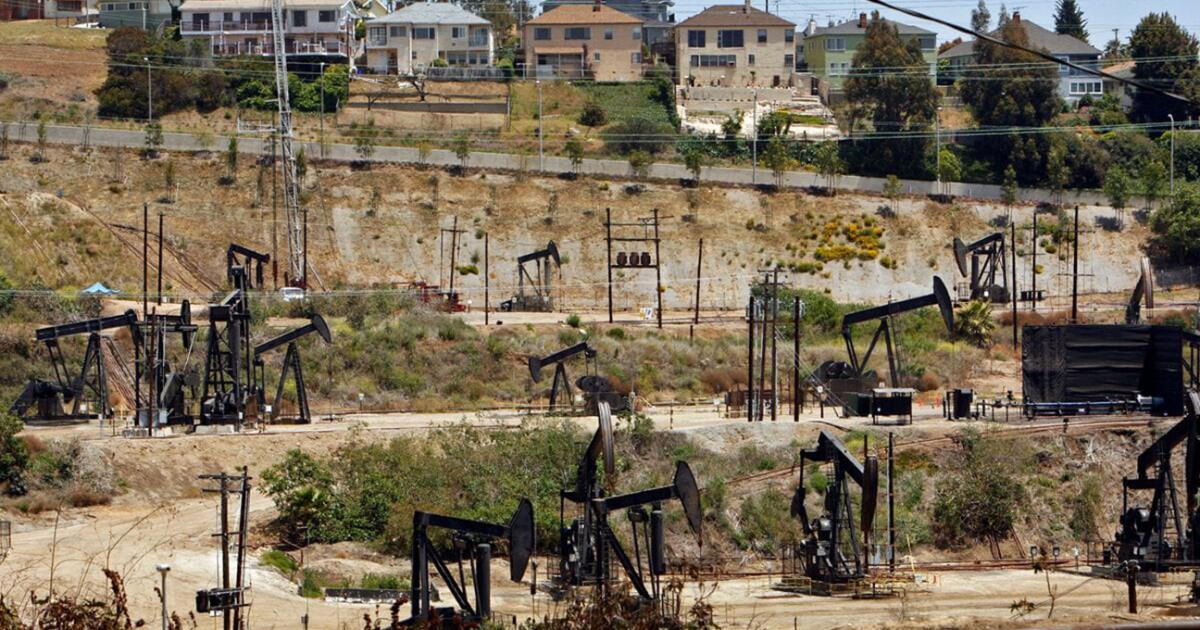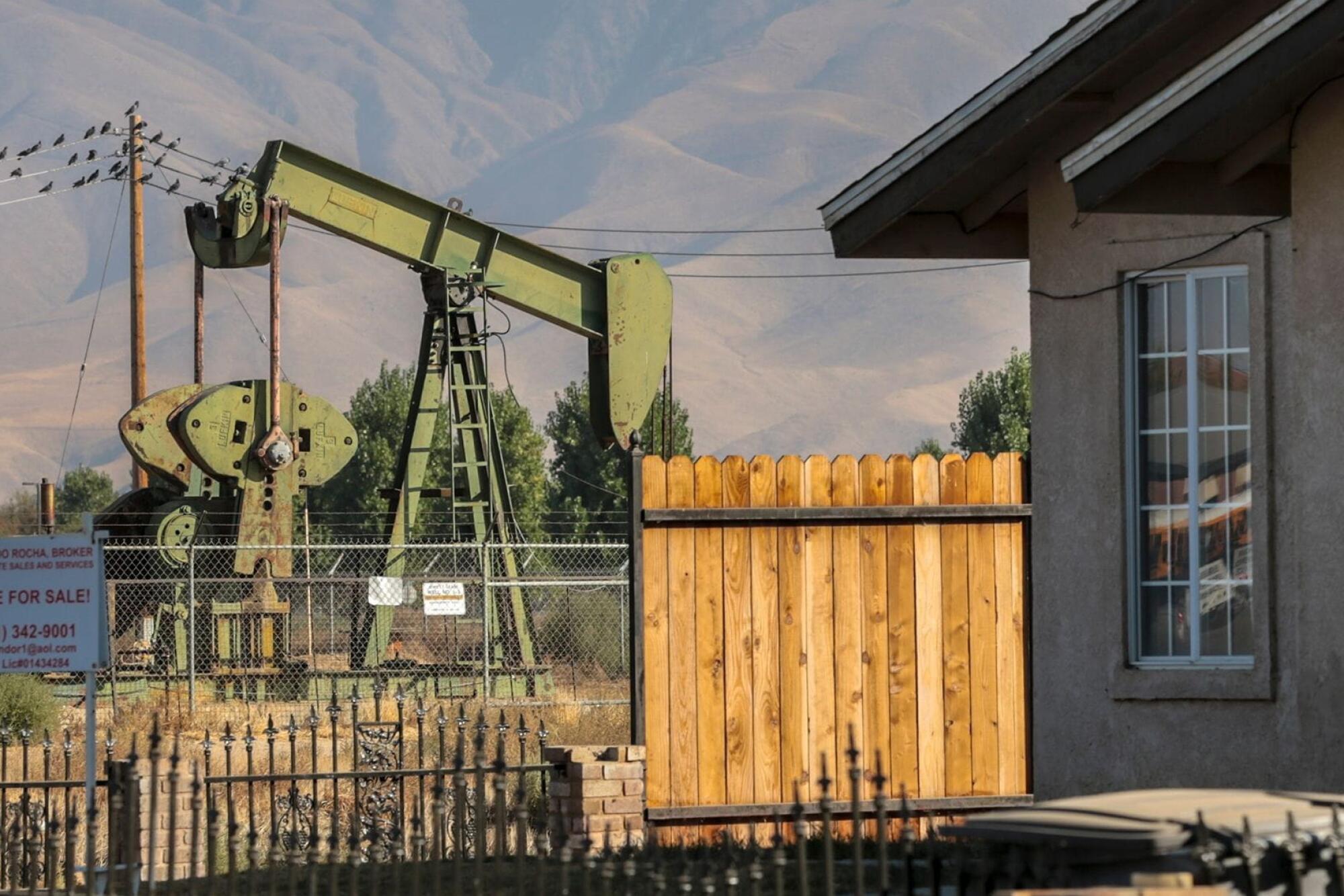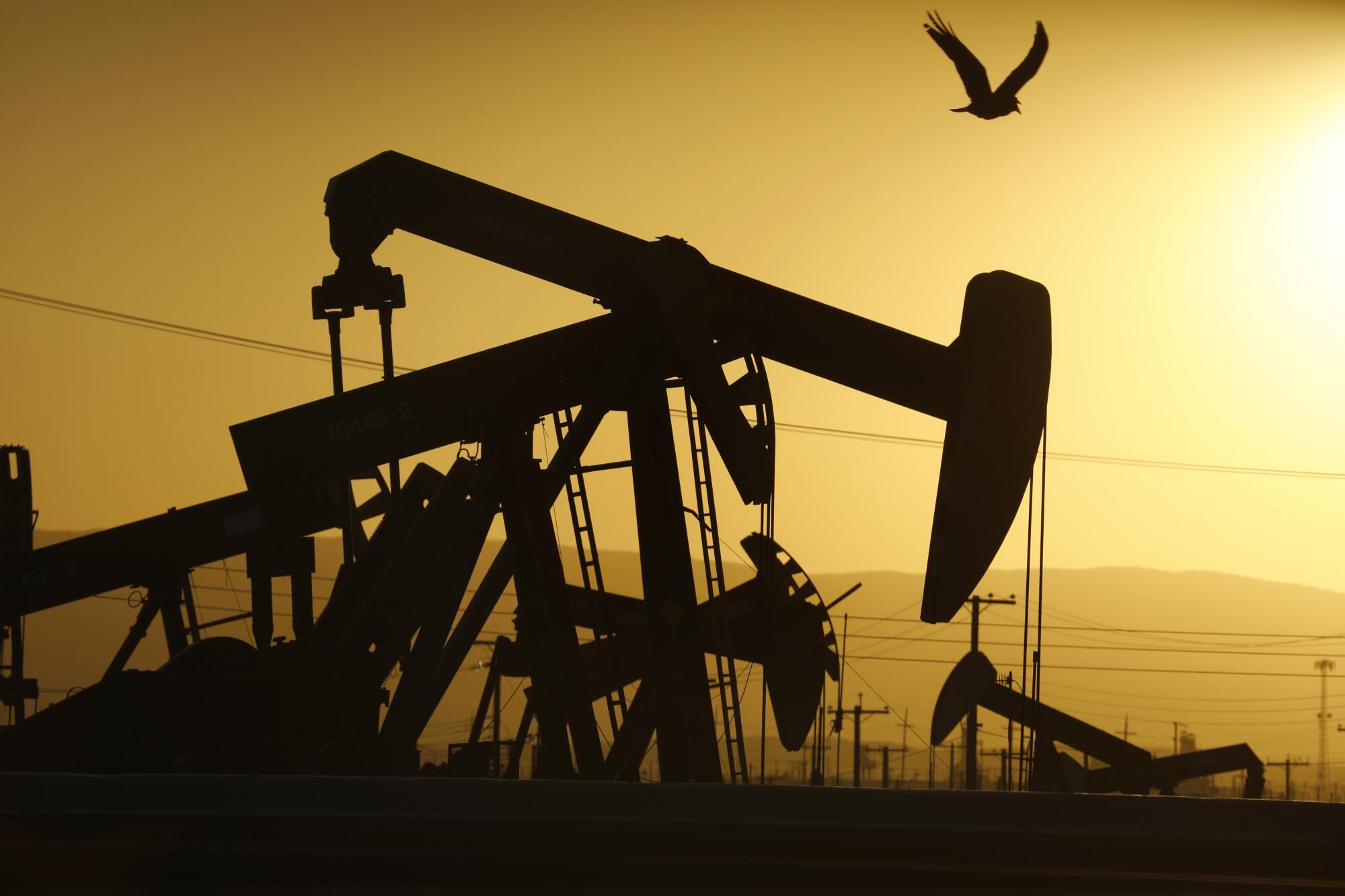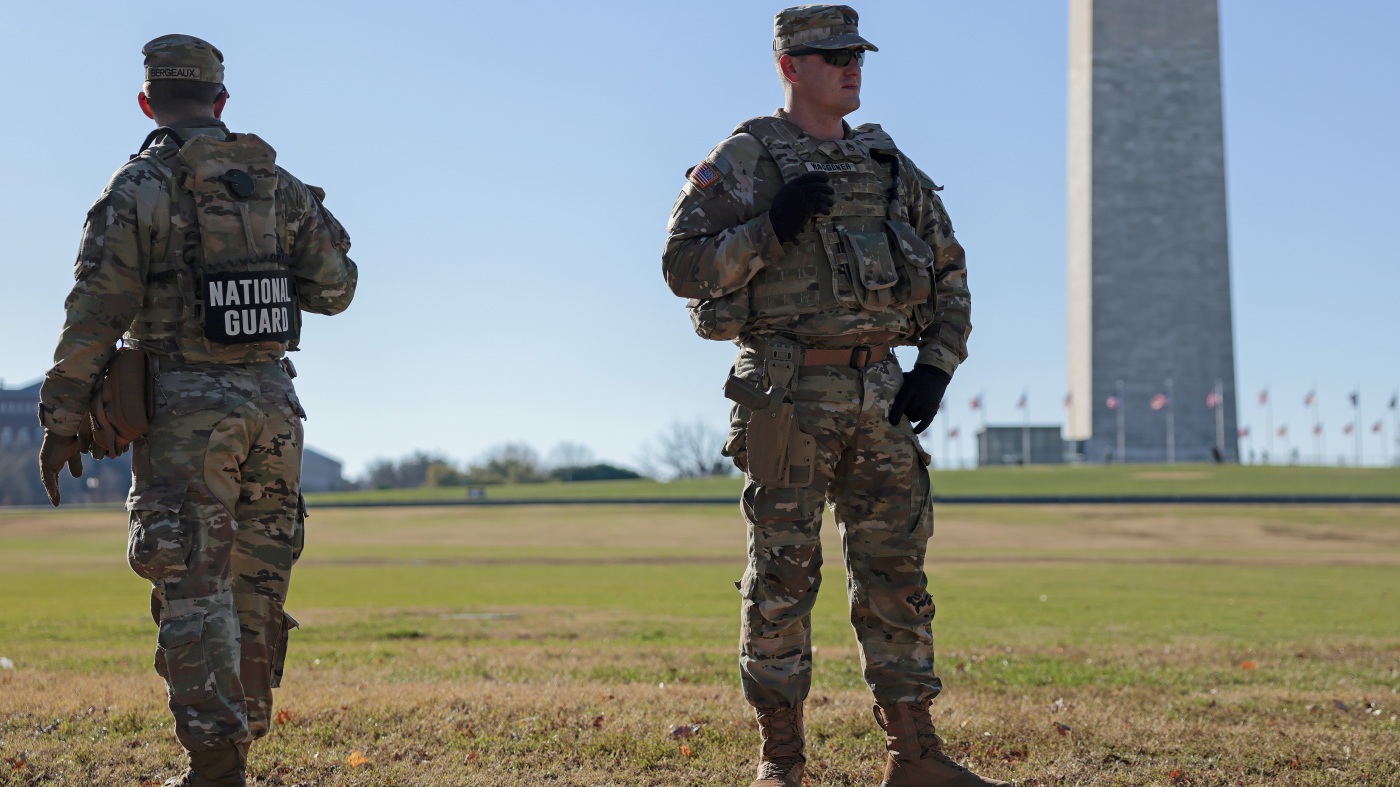California
Millions of Californians live near oil and gas wells that are in the path of wildfires

As firefighters continue to battle more than two dozen active wildfires in California, new research has found that millions of people are living in close proximity to oil and gas wells that are in the potential path of flames.
More than 100,000 wells in 19 states west of the Mississippi River are in areas that have burned in recent decades and face a high risk of burning in the future, with the vast majority in California, according to a study published recently in the journal One Earth.
What’s more, nearly 3 million Americans live within 3,200 feet of those wells, putting them at heightened risk of explosions, air and water pollution, infrastructure damage and other hazards.
“One of the things that surprised me was just the extent of how many oil wells had been in wildfire burn areas in the past, and how much this was impacting people in California — and is likely to in the coming century,” said David J.X. González, the study’s lead author and an assistant professor of environmental health sciences at UC Berkeley.
Aggressive and impactful reporting on climate change, the environment, health and science.
California is particularly vulnerable to the threat. Of the roughly 118,000 western oil wells in high fire risk areas, 103,878 of them — more than 87% — are in California, with 2.6 million residents living in close proximity to them, according to the study, which was described as the first to investigate historic and projected wildfire threats to oil and gas infrastructure in the United States.
The researchers examined active and inactive oil wells because some inactive wells continue to leak methane and other harmful or combustible emissions, González said. In California, the danger is particularly high in Los Angeles, Fresno, Kern and Orange counties, which are high fire risk areas that are also home to large populations and numerous wells.

A pump station sits idle near homes in Arvin, Calif., where toxic fumes from a nearby well made residents sick and forced evacuations in November 2019.
(Robert Gauthier / Los Angeles Times)
Many Angelenos have already experienced the perils of living near oil and gas infrastructure. In 1985, methane linked to a long-abandoned oil field fed an explosion at a Ross Dress for Less store in Fairfax, injuring more than 20 people.
In 2015, a massive gas leak from the Aliso Canyon underground storage facility near Porter Ranch released about 100,000 tons of methane, ethane and other chemicals into the air, forcing more than 8,000 families to flee their homes and prompting reports of nausea, skin rashes, nosebleeds and other health issues.
Four years later, a 90-year-old well erupted beneath a construction site in Marina del Rey and spewed oil, gas and other debris into the air for several days.
And in 2017, the Thomas fire burned through areas of Santa Barbara and Ventura counties that contained more than 2,100 oil and gas wells — the long-term effects of which have yet to be studied.
It’s not only California that is at risk however. Texas, Oklahoma and New Mexico also host wells in high fire risk areas, the study says. The U.S., in general, has been the top global producer of crude oil and natural gas since 2014, with the majority of production concentrated in the West.
Additionally, oil drilling continues across the country, despite federal and state efforts to curb new wells and cap old ones. One of the provisions included in President Biden’s landmark climate bill, the Inflation Reduction Act, allows for new oil leases to be auctioned on federally managed lands, which means California and other states could see more new wells in the future.
But the California Department of Geologic Energy Management, which oversees oil and gas wells in the state, said production here has been steadily declining since its peak in 1985.
“Presently, CalGEM approves far more permitting applications from operators to plug oil wells than it does to drill new wells,” agency spokeswoman Janice Mackey said in an email. She noted that over the last 12 months, the state agency approved 5,059 permits to permanently plug oil and gas wells while approving only 56 new drills.
Mackey said most of the nearly 250,000 wells under the state agency’s jurisdiction are in the San Joaquin Valley, “but there are also many others in high fire threat areas such as Santa Barbara, Ventura, and Los Angeles counties.”
That could prove to be a problem as wildfire activity continues to worsen, even in the face of slowing oil production. One recent study found that wildfire burn areas in California could increase 50% or more by midcentury, due largely to climate change. Eighteen of the state’s 20 largest wildfires have occurred since 2000.
Additionally, Mackey said the placement of new wells — which are determined by oil and gas operators who seek permits from local governments — has little to do with fire risk.
“California’s oil fields are well established from decades to [over a] century old,” she said. “Operators continue to drill in areas where oil and gas is known to exist.”
Estimates included in the study indicate the hazards will get worse in the decades ahead as population and wildfire activity expand. Between 1984 and 2019, the researchers documented a five-fold increase in the number of wells located in wildfire burn areas, and a doubling of the population living within 3,200 feet of those wells.
By midcentury, more than 122,000 wells are expected to be in high wildfire risk areas, and by late century that number will grow to more than 205,000, according to the study. Both projections are significantly higher when also accounting for moderate wildfire risk areas, and both show that California will continue to experience the lion’s share.
“Wildfires are increasingly burning in oil fields over the past four decades, and it’s a trend that’s very likely to continue throughout the rest of the century, including near some densely populated parts of California,” González said.

A 2020 photo shows one of more than 1,100 producing oil wells in the McKittrick oil field, just north of McKittrick, Calif., on State Route 33.
(Carolyn Cole/Los Angeles Times)
He added that estimates for the number of wells and people in harm’s way are likely conservative, as the study assessed wells drilled before 2020. That same year was California’s worst wildfire year on record, and saw more than 4.3 million acres burn.
The researchers also found that exposure to oil wells in the path of wildfires was unevenly distributed. Black, Latino and Native American people faced disproportionate risk.
The reasons for this are myriad, according to González.
For one, an estimated 350,000 new houses are constructed each year in the wildland urban interface, or the area where human development meets forestland and other natural landscapes. Such areas often draw people seeking lower costs of living, but face significant wildfire risks because of their remoteness and high vegetation content.
In urban areas, research has found that oil wells are more likely to be sited in neighborhoods that were historically redlined, or racially segregated. New wells are also disproportionately drilled in areas where Black and Latino people live.
There are solutions, however — or at least recommendations to help mitigate the risks of oil wells in populated, wildfire-prone regions. California recently approved legislation that prohibits new oil and gas wells within 3,200 feet of homes, schools, healthcare facilities and other sensitive sites.
The state will also receive more than $35 million in federal funding to help plug and remediate more than 200 high-risk orphaned oil and gas wells, and plans to invest more than a quarter of a billion state and federal dollars into orphan well plugging in the coming years.
The researchers also recommended limiting or eliminating drilling in high wildfire risk areas, and investing in better technology for monitoring wells for leaks of flammable gases.
“There’s a strong base of evidence that active wells are harmful for people that live nearby — even in the absence of wildfires,” González said. “So I think from a public health perspective, additional protections are well justified.”
Mackey, of the California Department of Geologic Energy Management, said oil and gas operators in the state are subject to multiple layers of regulation, including requirements that well pads and tanks be kept free of vegetation, and that wells within specified distances of homes and public rights-of-way have fire prevention devices, sensors and alarm systems.
“In the event of a fire, CalGEM will contact affected field operators to warn them of the possible risk and discuss strategies to prevent damage to wells and equipment,” she said. “Operators are directed to close pipelines and tanks and shut off power to wells if they are not already doing so. Operators also have fire suppression capabilities they deploy during emergencies.”
During the Thomas fire, which was the largest in California at the time, the operators in Santa Barbara and Ventura counties shut down their wells, pipelines and rig work as part of their emergency response to mitigate the risk of fire-related incidents, she said.
Despite such efforts, the study also highlighted what it referred to as a “pernicious feedback loop.” The production and consumption of fossil fuels are driving global warming, which is in turn increasing the frequency and intensity of wildfires, it says. Greenhouse gases emitted by fires are also exacerbating climate change and contributing to the cycle.
González said he hopes the study will prompt more action to not only reduce wildfires, but also to better protect people living in or near the oil wells in their paths.
“We have an opportunity now to take action to prevent future disasters,” he said.

California
California threatens Tesla with 30-day suspension of sales license for deceptive self-driving claims
SAN FRANCISCO — California regulators are threatening to suspend Tesla’s license to sell its electric cars in the state early next year unless the automaker tones down its marketing tactics for its self-driving features after a judge concluded the Elon Musk-led company has been misleading consumers about the technology’s capabilities.
The potential 30-day blackout of Tesla’s California sales is the primary punishment being recommended to the state’s Department of Motor Vehicles in a decision released late Tuesday. The ruling by Administrative Law Judge Juliet Cox determined that Tesla had for years engaged in deceptive marketing practices by using the terms “Autopilot” and “Full Self-Driving” to promote the autonomous technology available in many of its cars.
After presiding over five days of hearings held in Oakland, California in July, Cox also recommended suspending Tesla’s license to manufacture cars at its plant in Fremont, California. But California regulators aren’t going to impose that part of the judge’s proposed penalty.
Tesla will have a 90-day window to make changes that more clearly convey the limits of its self-driving technology to avoid having its California sales license suspended. After California regulators filed its action against Tesla in 2023, the Austin, Texas, company already made one significant change by putting in wording that made it clear its Full Self-Driving package still required supervision by a human driver while it’s deployed.
“Tesla can take simple steps to pause this decision and permanently resolve this issue — steps autonomous vehicle companies and other automakers have been able to achieve,” said Steve Gordon, the director of the California Department of Motor Vehicles.
Tesla didn’t immediately respond to a request for comment Wednesday.
The automaker has already been plagued by a global downturn in demand that began during a backlash to Musk’s high-profile role overseeing cuts in the U.S. government budget overseeing the Department of Government that President Donald Trump created in his administration. Increased competition and an older lineup of vehicles also weighed on Tesla sales, although the company did revamp its Model Y, the world’s bestselling vehicle, and unveil less-expensive versions of the Model Y and Model X.
Although Musk left Washington after a falling out with Trump, the fallout has continued to weigh on Tesla’s auto sales, which had decreased by 9% from 2024 through the first nine months of this year.
Despite the slump and the threatened sales suspension in California, Tesla’s stock price touched an all-time high $495.28 during Wednesday’s early trading before backtracking later to fall below $470. Despite that reversal, Tesla’s shares are still worth slightly more than they were before Musk’s ill-fated stint in the Trump administration — a “somewhat successful” assignment he recently said he wouldn’t take on again.
The performance of Tesla’s stock against the backdrop of eroding auto sales reflects the increasing emphasis that investors are placing on Musk’s efforts to develop artificial intelligence technology to implant into humanoid robots and a fleet of self-driving Teslas that will operate as robotaxis across the U.S.
Musk has been promising Tesla’s self-driving technology would fulfill his robotaxi vision for years without delivering on the promise, but the company finally began testing the concept in Austin earlier this year, albeit with a human supervisor in the car to take over if something went awry. Just a few days ago, Musk disclosed Tesla had started tests of its robotaxis without a safety monitor in the vehicle.
California regulators are far from the first critic to accuse Tesla of exaggerating the capabilities of its self-driving technology in a potentially dangerous manner. The company has steadfastly insisted that information contained in its vehicle’s owner’s manual on its website have made it clear that its self-driving technology still requires human supervision, even while releasing a 2020 video depicting one of its cars purportedly driving on its own. The video, cited as evidence against Tesla in the decision recommending a suspension of the company’s California sales license, remained on its website for nearly four years.
Tesla has been targeted in a variety of lawsuits alleging its mischaracterizations about self-driving technology have lulled humans into a false of security that have resulted in lethal accidents. The company has settled or prevailed in several cases, but earlier this year a Miami jury held Tesla partly responsible for a lethal crash in Florida that occurred while Autopilot was deployed and ordered the automaker to pay more than $240 million in damages.
California
California warns Tesla faces 30-day sale ban for misleading use of

The California DMV on Tuesday said Tesla Motors faces a possible 30-day sale ban over its misleading use of the term “autopilot” in its marketing of electric vehicles.
On Nov. 20, an administrative judge ruled that Tesla Motors’ use of “autopilot ” and “full self-driving capability” was a misleading description of its “advanced driving assistant features,” and that it violated state law, the DMV said.
In their decision, the judge proposed suspending Tesla’s manufacturing and dealer license for 30 days. However, the DMV is giving Tesla 60 days to address its use of the term “autopilot” before temporarily suspending its dealer license.
“Tesla can take simple steps to pause this decision and permanently resolve this issue — steps autonomous vehicle companies and other automakers have been able to achieve in California’s nation-leading and supportive innovation marketplace,” DMV Director Steve Gordon said.
Tesla had already stopped its use of “full self-driving capability” and switched to “full self-driving (supervised)” after the DMV filed accusations against it in November 2023.
The DMV said its decision to file those accusations stretches back to Tesla’s 2021 marketing of its advanced driver assistance system. Besides the two terms, the DMV said it also took issue with the phrase, “The system is designed to be able to conduct short and long-distance trips with no action required by the person in the driver’s seat.”
“Vehicles equipped with those ADAS features could not at the time of those advertisements, and cannot now, operate as autonomous vehicles,” the DMV said.
As for the manufacturing license suspension, the DMV issued a permanent stay on that proposal.
California
Former California doctor sentenced in Matthew Perry’s overdose death

LOS ANGELES — A former California doctor was sentenced to 8 months of home detention and 3 years of supervised release Tuesday after pleading guilty to ketamine distribution in connection with the fatal overdose of “Friends” star Matthew Perry.
Mark Chavez pleaded guilty in 2024 to one count of conspiring to distribute ketamine to Perry, who died at 54. Chavez appeared Tuesday before U.S. District Judge Sherilyn Peace Garnett in Los Angeles. He faced up to 10 years in prison.
He will also be required to complete 300 hours of community service and pay a $100 special assessment to the U.S. government.
“My heart goes out to the Perry family,” Chavez said outside of court after his sentencing.
Zach Brooks, a member of Chavez’s legal team, said Tuesday: “what occurred in this case was a profound departure from the life he had lived up to that point. The consequences have been severe and permanent. Mr. Chavez has lost his career, his livelihood, and professional identity that he has worked for decades to develop.”
“Looking forward, Mr. Chavez understands that accountability does not end with this sentence. He’s committed to using the rest of his life to contribute positively, to support others and to ensure that nothing like this ever happens again,” Brooks said. “While he cannot undo what occurred, he can choose how he lives his life from this moment.”
Chavez was one of five people charged in connection with Perry’s death. The TV star died of an accidental overdose and was found dead in a hot tub at his Los Angeles home in October 2023.
Chavez’s lawyer, Matthew Binninger, has previously said his client was “incredibly remorseful” and “accepting responsibility” for his patient’s overdose.
Chavez was a licensed physician in San Diego who formerly operated a ketamine clinic. Prosecutors said he sold ketamine to another doctor, Salvador Plasencia, who then distributed it to Perry.
“I wonder how much this moron will pay,” Plasencia said in a text exchange to Chavez, according to the investigators. “Lets find out.”
Earlier this month, Plasencia was sentenced to two and a half years in federal prison for his involvement in the case.
Chavez wrote “a fraudulent prescription in a patient’s name without her knowledge or consent, and lied to wholesale ketamine distributors to buy additional vials of liquid ketamine that Chavez intended to sell to Plasencia for distribution to Perry,” the indictment in the case said.
In the month before his death, the doctors provided Perry with about 20 vials of ketamine and received some $55,000 in cash, according to federal prosecutors.
Perry was undergoing ketamine infusion therapy to treat depression and anxiety, according to a coroner’s report. However, the levels of ketamine in his body at the time of his death were dangerously high, roughly the same amount used for general anesthesia during surgery. The coroner ruled his death an accident.
Before his death, Perry was open about his lengthy struggles with opioid addiction and alcohol use disorder, which he chronicled in his 2022 memoir, “Friends, Lovers and the Big Terrible Thing.”
Katie Wall reported from Los Angeles and Daniella Silva reported from New York.
This is a developing story. Please check back for updates.
-

 Iowa3 days ago
Iowa3 days agoAddy Brown motivated to step up in Audi Crooks’ absence vs. UNI
-

 Washington1 week ago
Washington1 week agoLIVE UPDATES: Mudslide, road closures across Western Washington
-

 Iowa4 days ago
Iowa4 days agoHow much snow did Iowa get? See Iowa’s latest snowfall totals
-

 Maine1 day ago
Maine1 day agoElementary-aged student killed in school bus crash in southern Maine
-
World1 week ago
Chiefs’ offensive line woes deepen as Wanya Morris exits with knee injury against Texans
-

 Maryland3 days ago
Maryland3 days agoFrigid temperatures to start the week in Maryland
-

 Technology6 days ago
Technology6 days agoThe Game Awards are losing their luster
-

 South Dakota3 days ago
South Dakota3 days agoNature: Snow in South Dakota



















